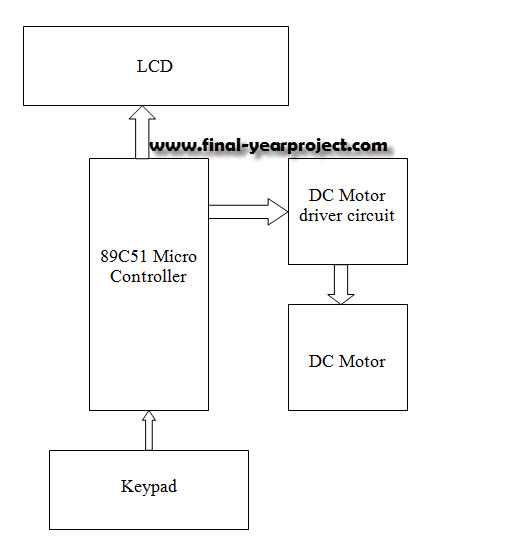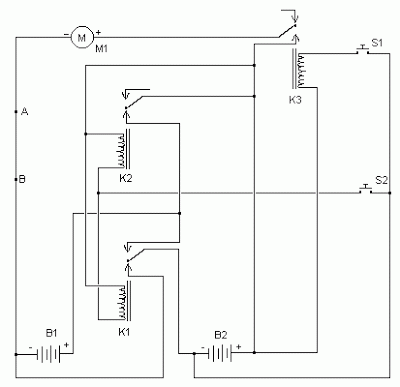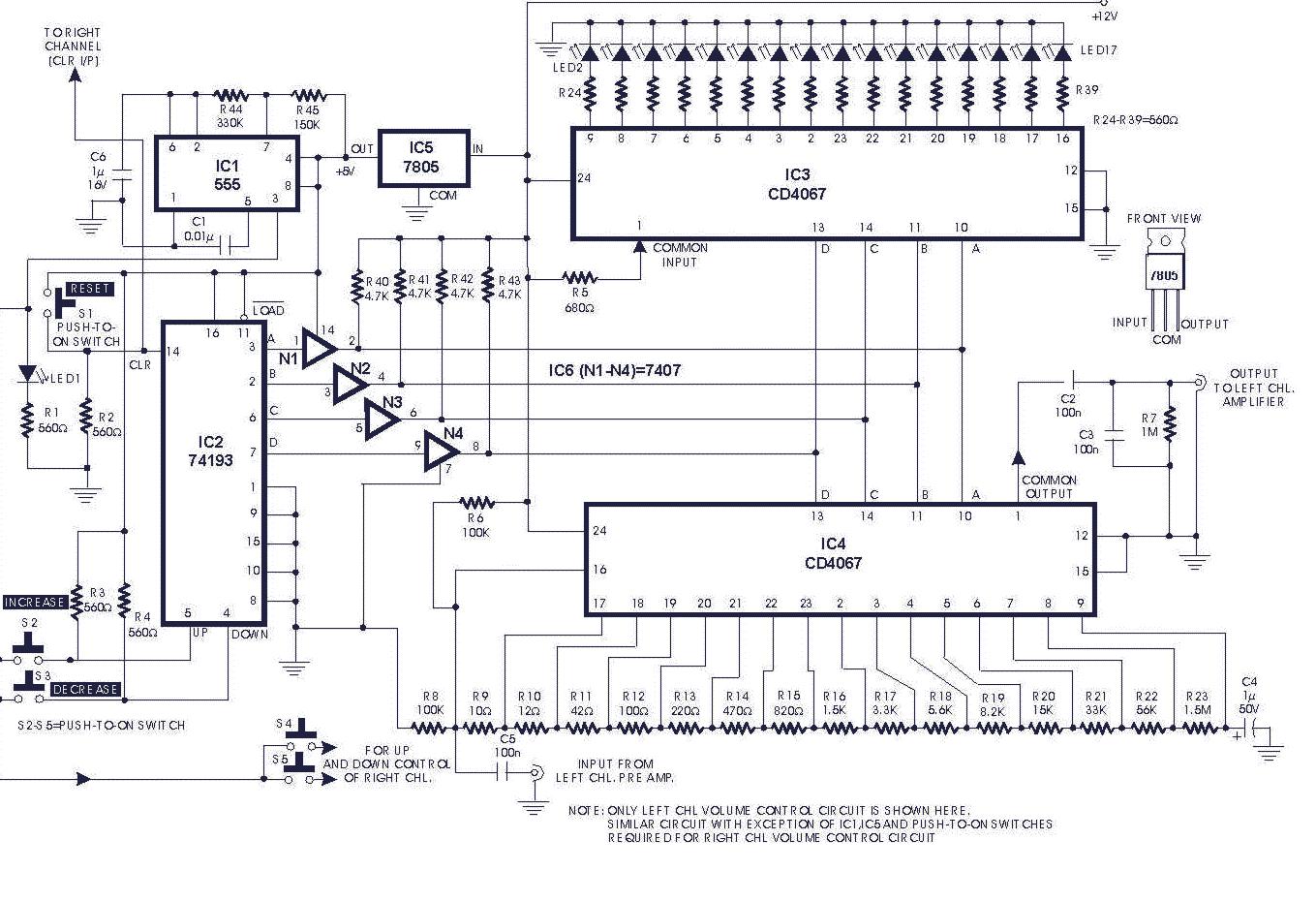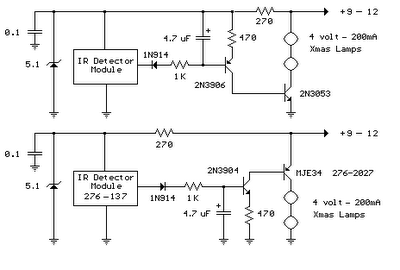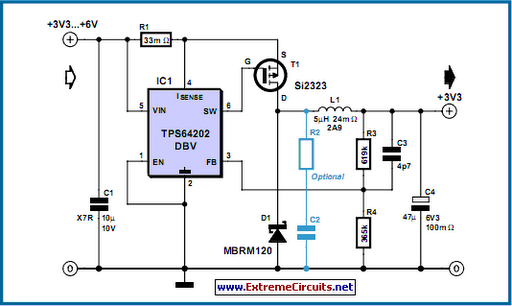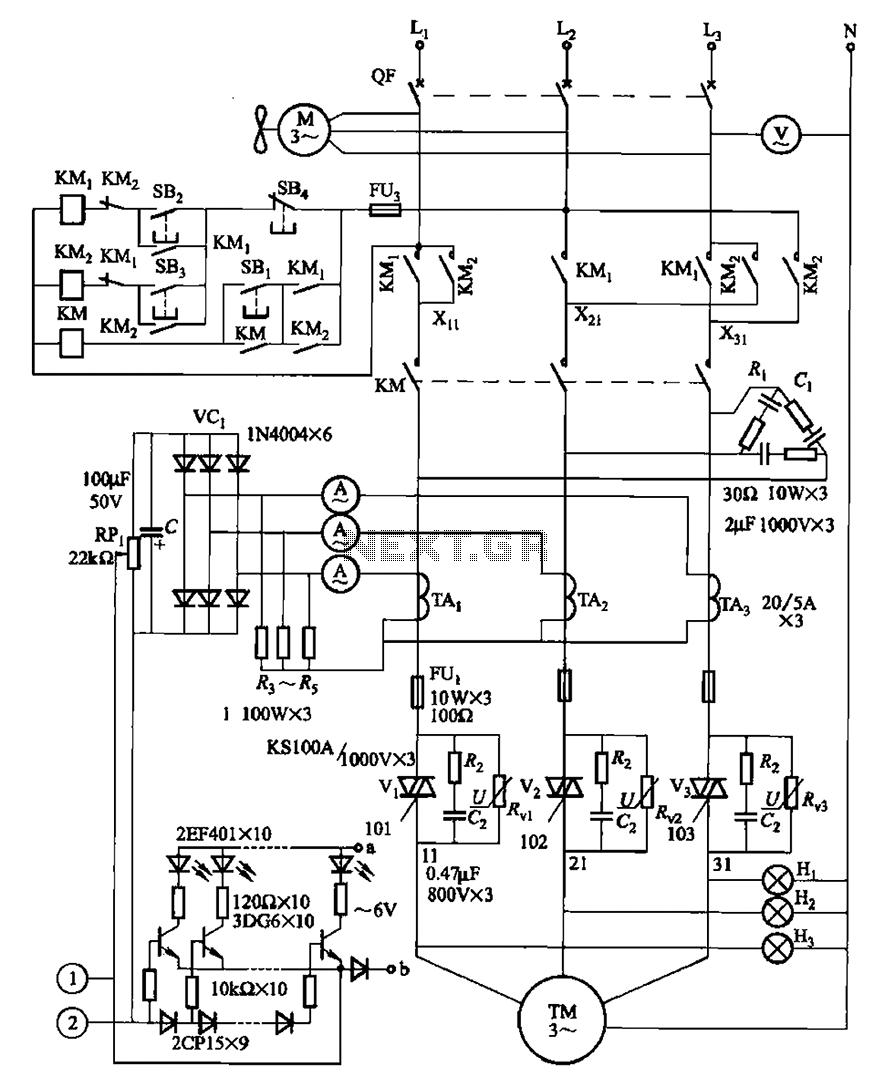
Low loss brightness control
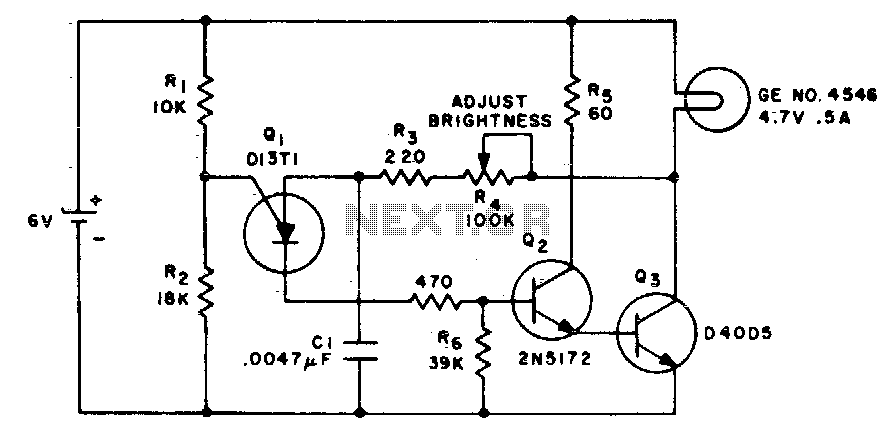
This circuit alters the average value of the DC supply voltage due to the high switching frequency. The tungsten lamp will exhibit an almost continuous adjustable light output ranging from 0 to 100%. If a light-emitting diode is utilized as the emitting device, the infrared radiance will be in phase with the applied current pulses and will diminish to zero when the supply current is zero.
The described circuit is a pulse-width modulation (PWM) controller designed to regulate the average output voltage supplied to a load, such as a tungsten lamp or light-emitting diode (LED). The high switching frequency of the circuit allows for rapid modulation of the supply voltage, enabling fine control over the intensity of the light output.
In the case of a tungsten lamp, the circuit achieves an adjustable light output by varying the duty cycle of the PWM signal. The duty cycle refers to the proportion of time the signal is in the "on" state compared to the "off" state within a given cycle. By increasing the duty cycle, the average voltage supplied to the lamp increases, resulting in a brighter output. Conversely, decreasing the duty cycle reduces the average voltage and dims the light output. This process allows for smooth transitions in brightness, providing a range that can be finely tuned from 0% (off) to 100% (full brightness).
When employing an LED as the emitting device, the behavior of the circuit remains similar, but with some nuances. The LED's infrared radiance is directly related to the current flowing through it, and since the circuit operates by pulsing the current, the emitted light intensity is modulated correspondingly. The phase relationship between the current pulses and the emitted infrared light is critical; the light output is maximized when the current is at its peak and falls to zero as the current drops to zero. This characteristic is essential for applications requiring precise control over light output, such as in dimmable lighting systems or in applications where energy efficiency is paramount.
Overall, this circuit provides an effective means of controlling light output in a variety of applications, leveraging the principles of PWM to achieve desired performance characteristics.This circuit changes the average value of the dc supply voltage because of the high switching frequency. The tungsten lamp will have an almost continuous adjustable light output between 0 and 100% If a light emitting diode is used as the emitting device, the ir-radiance will be in phase with the applied current pulses and will decrease to zero when the supply current is zero. 🔗 External reference
The described circuit is a pulse-width modulation (PWM) controller designed to regulate the average output voltage supplied to a load, such as a tungsten lamp or light-emitting diode (LED). The high switching frequency of the circuit allows for rapid modulation of the supply voltage, enabling fine control over the intensity of the light output.
In the case of a tungsten lamp, the circuit achieves an adjustable light output by varying the duty cycle of the PWM signal. The duty cycle refers to the proportion of time the signal is in the "on" state compared to the "off" state within a given cycle. By increasing the duty cycle, the average voltage supplied to the lamp increases, resulting in a brighter output. Conversely, decreasing the duty cycle reduces the average voltage and dims the light output. This process allows for smooth transitions in brightness, providing a range that can be finely tuned from 0% (off) to 100% (full brightness).
When employing an LED as the emitting device, the behavior of the circuit remains similar, but with some nuances. The LED's infrared radiance is directly related to the current flowing through it, and since the circuit operates by pulsing the current, the emitted light intensity is modulated correspondingly. The phase relationship between the current pulses and the emitted infrared light is critical; the light output is maximized when the current is at its peak and falls to zero as the current drops to zero. This characteristic is essential for applications requiring precise control over light output, such as in dimmable lighting systems or in applications where energy efficiency is paramount.
Overall, this circuit provides an effective means of controlling light output in a variety of applications, leveraging the principles of PWM to achieve desired performance characteristics.This circuit changes the average value of the dc supply voltage because of the high switching frequency. The tungsten lamp will have an almost continuous adjustable light output between 0 and 100% If a light emitting diode is used as the emitting device, the ir-radiance will be in phase with the applied current pulses and will decrease to zero when the supply current is zero. 🔗 External reference
Warning: include(partials/cookie-banner.php): Failed to open stream: Permission denied in /var/www/html/nextgr/view-circuit.php on line 713
Warning: include(): Failed opening 'partials/cookie-banner.php' for inclusion (include_path='.:/usr/share/php') in /var/www/html/nextgr/view-circuit.php on line 713
